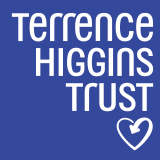HIV medication and drugs
If you’re taking party drugs and you’re on medication for HIV – particularly ritonavir (Norvir) or cobicistat (Tybost) – there can potentially be dangerous interactions. Your HIV pills might increase the amounts of some drugs in your system to dangerous levels.
Two drugs – ritonavir (Norvir) and cobicistat (Tybost) – are the most likely drugs to interact badly with recreational drugs. These drugs boost the power of other antiretrovirals – usually protease inhibitors.
Because ritonavir and cobicistat boost the levels of other drugs, they can also affect the way recreational drugs are processed by the liver. They cause the recreational drug to stay in the body longer, or be present in larger concentrations – this could lead to an overdose.
The drugs that are most affected by ritonavir and cobicistat are:
- Mephedrone – moderate risk of interactions.
- Crystal meth – moderate risk.
- MDMA – moderate risk.
- Ketamine – high risk of interactions.
- Viagra-type drugs – high risk.
- Benzos (like Valium) – high risk.
For GBL/GHB, the risk of interactions is unknown, but it would be safer to assume that taking ritonavir or cobicistat can boost the levels of G in your body, as per other recreational drugs.
Ritonavir can be given by itself alongside a protease inhibitor and is also found in the combination pill Kaletra and in the treatment for hepatitis C, the Viekira Pak.
Cobicistat is found in Stribild – a combination tablet with elvitegravir (Vitekta), tenofovir (Viread) and emtricitabine (FTC). It’s also a component of Prezcobix where it’s combined with darunavir (Prezista), and Evotaz, where it’s combined with atazanavir (Reyataz).
For more detailed information on interactions with each recreational drug, please see the information below.
Starting meds
In the first four weeks of taking new HIV meds your body is still getting used to the drugs. As a result, this time can be one of the most dangerous for possible interactions between drugs.
Talking to your HIV doctor
Having an honest conversation with your HIV doctor or pharmacist is really important so you can get the best advice on how you can reduce the chances of dangerous interactions. This may involve taking a break from chems, or starting or changing to a different combination of HIV meds with fewer interactions.
If your HIV meds are new, it might be worth noting down the names of what you’re taking before going through this list.
Interactions by recreational drugs
Alcohol
Occasional and light use of alcohol won’t cause you any problems.
However, regular, heavy alcohol use can weaken your immune system which may decrease the effectiveness of your HIV meds.
Alcohol can also increase the levels of abacavir in your blood.
Amphetamines (speed)
Similar to methamphetamine (crystal meth) – when used with ritonavir or cobicistat the levels of amphetamines (speed) can double or treble, potentially to fatal levels.
Crystal meth
When used with ritonavir or cobicistat the levels of crystal in your blood can double or treble, potentially to fatal levels.
Cannabis
No known interactions, although there can be a possible rise in cannabis levels if you’re taking protease inhibitors.
Cocaine
If you’re taking any of the NNRTIs efavirenz (Sustiva), etravirine (Intelence) or neviripine (Viramune), they can have an impact on the levels of cocaine in your body.
GBL/GHB
Potentially dangerous when used with ritonavir and cobicistat as they may increase levels of GHB in your body.
Ketamine
As K is mainly filtered through the liver in the same way as ritonavir and cobicistat, there’s a theoretical risk that this could increase levels of K in the body.
If you’re taking any of the NNRTIs efavirenz (Sustiva), etravirine (Intelence) or neviripine (Viramune) levels of ketamine may be affected.
Legal highs
As most legal highs are new, untested chemicals, HIV drug interactions are unknown.
But if you’re taking something that mimics the effects of a party drug that is known to have a bad reaction when mixed with HIV meds, extreme caution is recommended.
MDMA (ecstasy)
Ritonavir and cobicistat are likely to make MDMA 5 to 10 times stronger.
This is a dangerous combination, and one person has already died in the UK from taking a regular dose of MDMA while on ritonavir.
When it comes to ecstasy tablets (E), the level of danger depends on how much MDMA is in the pill in the first place, which is impossible to tell.
If you do take MDMA, some doctors suggest taking a quarter of a dose. If you have no adverse reactions, you could potentially think about raising this to half a dose.
Try to space out the drug and the HIV therapy as much as possible.
Mephedrone
As this is a fairly new party drug, there are currently no known interactions with HIV meds.
That doesn’t mean that there aren’t any, so be extra careful if you’ve just started taking meds and watch out for any adverse reactions.
Sleeping tablets
The protease inhibitor indinavir (Crixivan) can increase the levels of phenobarbital in the blood, but other interactions are also possible.
Tranquilisers
Mixing the sedatives trizaolam, diazepam and midazolam with ritonavir and cobicistat can kill you, causing breathing difficulties at high doses.
An overdose of benzodiazepines can lead someone to pass out or breathe dangerously slowly. If you’re taking other types of tranquilisers, please speak to a clinician to find out whether they could be affected by your HIV meds.
Steroids
Some HIV drugs can elevate the levels of anabolics in your blood, making adverse reactions more likely. They put an extra strain on the liver when taken with HIV drugs.
Always consult a doctor before taking anabolic steroids.
Viagra
Again, ritonavir and cobicistat are the ones to watch out for here.
When taken with Viagra and Viagra-like drugs, levels of the erection drug can rise three to four times above normal levels. An overdose of erection drugs is dangerous for the heart.
Some doctors advise taking only a 25 mg dose of sildenafil (Viagra) every 48 hours for the same effect. This dose should be even smaller with stronger erection drugs like tadalafil (Cialis) and vardenafil (Levitra) – no more than 10 mg of Cialis or 2.5 mg of Levitra should be taken per 72 hours.
One possible reaction is a hard-on that won’t go soft for over four hours. This can lead to permanent damage to a man’s cock, so seek urgent medical advice if this happens.
If you’re taking any of the NNRTIs efavirenz (Sustiva), etravirine (Intelence) or neviripine (Viramune) the levels of erection drugs may be lowered.
No known interactions with:
No known interactions are thought to occur when taking:
- all nucleoside reverse transcriptase inhibitors (NRTIs)
- the NNRTI rilpivirine (Edurant)
- the integrase inhibitors raltegravir (Isentress) and dolutegravir (Tivicay)
- the CCR5 inhibitor maraviroc (Celsentri).
If you’re regularly using chems, speak to your doctor, as they may be able to switch you to a combination which has no dangerous interactions. Your doctor will be used to talking to people about their drug use so don’t be afraid to be open with them.
Injecting
If you inject, this will increase the amount of drug getting directly into your bloodstream – which could increase the risk of interactions.
‹‹ Previous: Prepare and Repair
Published: 30/08/2018
Next review: 30/08/2021



